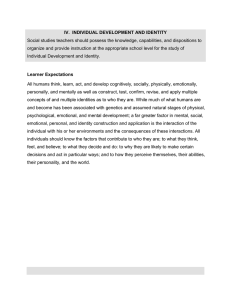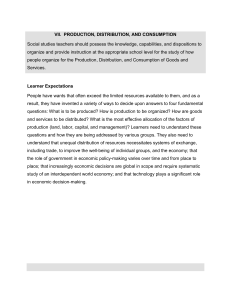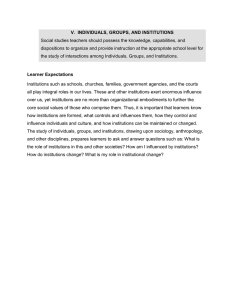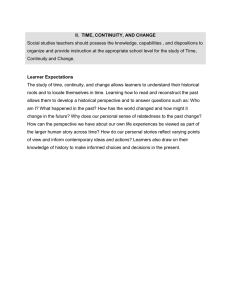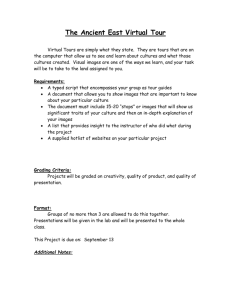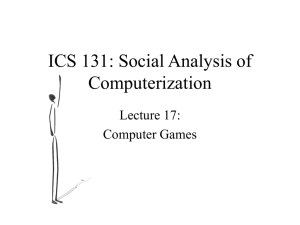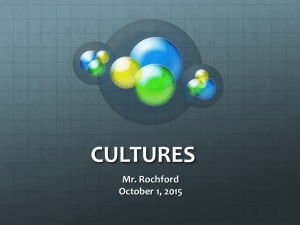I. CULTURE AND CULTURAL DIVERSITY
advertisement
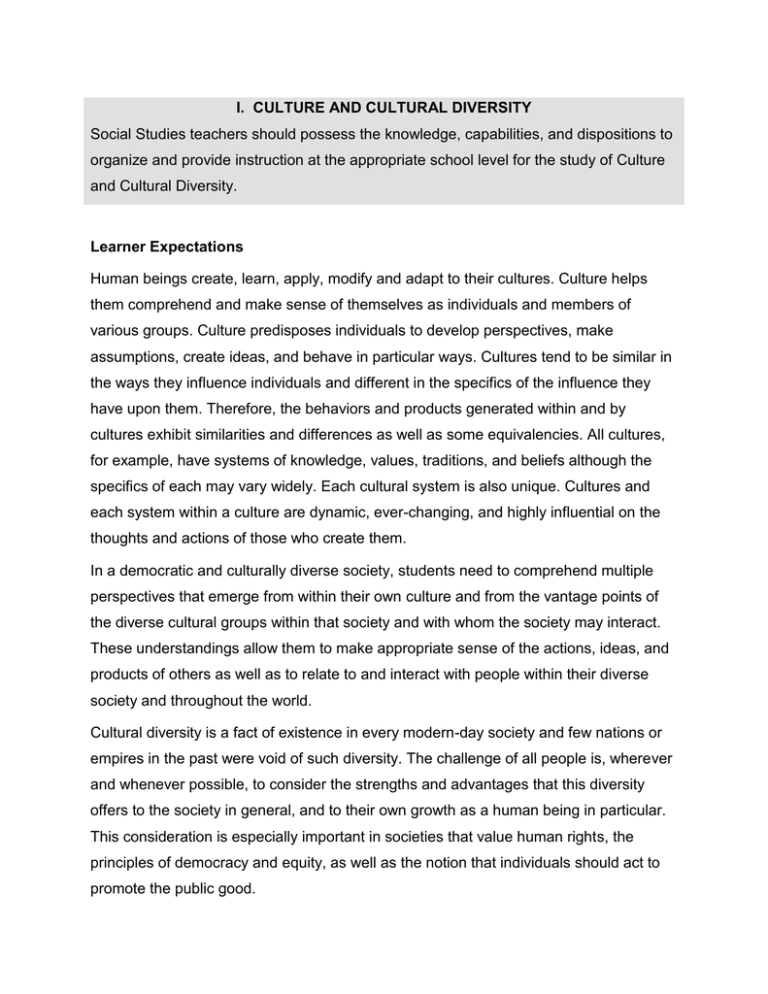
I. CULTURE AND CULTURAL DIVERSITY Social Studies teachers should possess the knowledge, capabilities, and dispositions to organize and provide instruction at the appropriate school level for the study of Culture and Cultural Diversity. Learner Expectations Human beings create, learn, apply, modify and adapt to their cultures. Culture helps them comprehend and make sense of themselves as individuals and members of various groups. Culture predisposes individuals to develop perspectives, make assumptions, create ideas, and behave in particular ways. Cultures tend to be similar in the ways they influence individuals and different in the specifics of the influence they have upon them. Therefore, the behaviors and products generated within and by cultures exhibit similarities and differences as well as some equivalencies. All cultures, for example, have systems of knowledge, values, traditions, and beliefs although the specifics of each may vary widely. Each cultural system is also unique. Cultures and each system within a culture are dynamic, ever-changing, and highly influential on the thoughts and actions of those who create them. In a democratic and culturally diverse society, students need to comprehend multiple perspectives that emerge from within their own culture and from the vantage points of the diverse cultural groups within that society and with whom the society may interact. These understandings allow them to make appropriate sense of the actions, ideas, and products of others as well as to relate to and interact with people within their diverse society and throughout the world. Cultural diversity is a fact of existence in every modern-day society and few nations or empires in the past were void of such diversity. The challenge of all people is, wherever and whenever possible, to consider the strengths and advantages that this diversity offers to the society in general, and to their own growth as a human being in particular. This consideration is especially important in societies that value human rights, the principles of democracy and equity, as well as the notion that individuals should act to promote the public good. INSTRUCTIONS 1. List the courses you have taken (and final grade earned) that you feel have addressed this standard. Course # Course Name Instructor Grade Ck 2. Check (ck) above the one course that best enabled you to understand the concepts in this standard. Attach a graded work sample from this class. Attach a syllabus from this class. Highlight where the work sample appears in the syllabus. Note that you can use one course for more than one standard; however, you can only use your graded work sample once. 3. Write a 150-200 words essay (typed, double-spaced, and in 12-point font) that addresses the questions listed below. a. Why did you choose this particular course as your example? (Demonstrate that you understand the content and concepts contained in the standard. Show clearly how the course relates to the standard.) b. How does your work sample show that you understand this standard? (Demonstrate the sample's relationship to the standard.)
